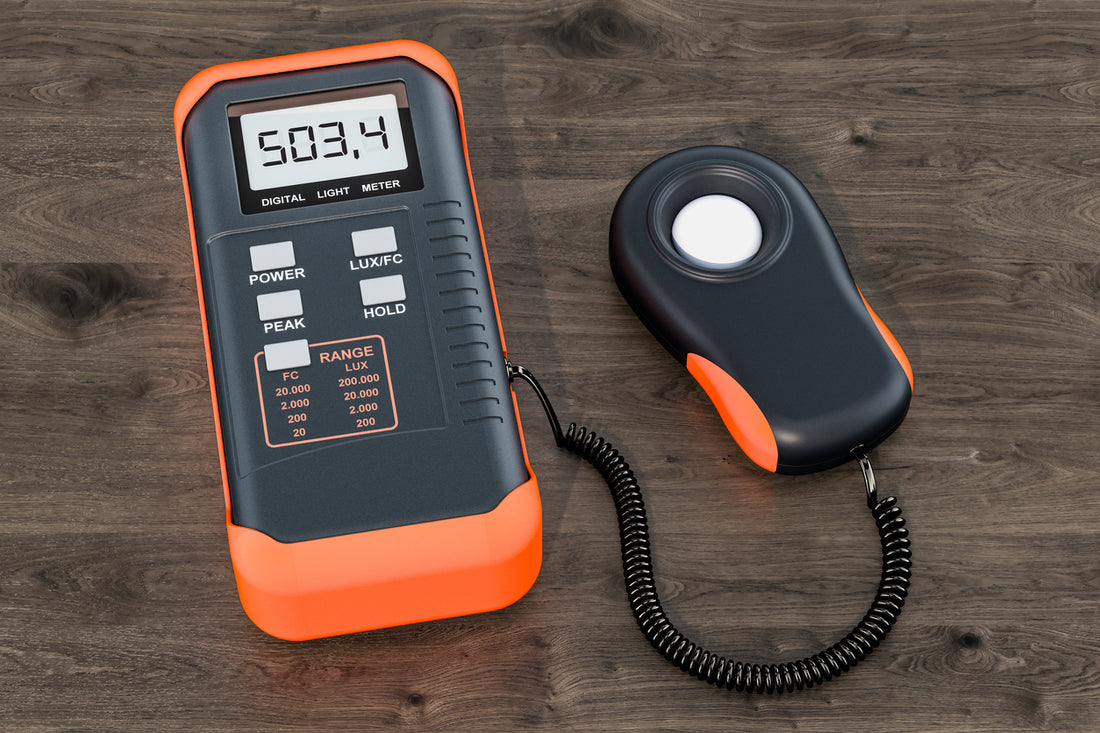Better Lighting Enables Better Eye Protection
In many instances we have observed lampworking / flameworking work benches with insufficient lighting, which is usually combined with the worker using insufficient eye protection such as didymium glass lenses or polycarbonate sodium flare lenses that do not protect the eyes from infrared radiation.
In order to achieve recommended eye protection from infrared light, it is preferred to use eyewear with an ANSI Welding Shade #3. Of course, every pair of VETROSAFE lenses exceed this standard with a shade #4 equivalent of 95% infrared light blocking.
Correct Compensation for Eyewear Filtering
VETROSAFE and other brands of Shade #3 special purpose lenses for glass flameworking include visible light filtering, and in particular for the visible yellow sodium flaring which are caused by the torch heating of sodium content in certain glass formulations (noteably borosilicate glasses). Consequently, these glasses reduce the overall light transmission to around 15% of visible light.
According to industrial illumination standards, a minimum lighting level between 300 to 500 lux is recommended for general purpose tasks at an indoor workstation (see photo above for an example of a lux meter measuring benchtop illumination). However, to achieve a 300 lux brightness on the workbench while also wearing appropriate flameworking eyewear requires approximately 600% more light power, or 2000 lux.
Since the measure of 1 lux is 1 lumen per square meter, an appropriate illumination can be achieved by placing a 2000 lumen light fixture approximately 3 feet (1 meter) above the workstation. However, if the light source is 6 feet above the workstation (for example on the ceiling) then the overall light power must be greater by a factor of 4 (e.g. 8000 lumens total).
For typical LED light efficiency is 100 lumens per watt. This means the 2000 lumen fixture requires about 20 watts, or the 8000 lumen setup 80 watts. NOTE: these numbers refer to actual wattage not "equivalent wattage" which is used on some bulbs to make a comparison to incandescent equivalent lighting levels.
Reducing Shadows with Diffuse Lighting
A further consideration for workstation illumination is elimination of shadows that can make it difficult to see a workpiece while manipulating it with tools at various angles. To reduce shadows, the light source should have a broad light emitting surface with a light diffusing plastic cover. An ideal format would be a 2x4 foot shop light. In some cases placing secondary lighting on the sides of a workbench may also improve overall quality of vision. These light sources should also be elongated in at least one dimension, such as a linear tube light. Point sources or near-point source lights such as bulbs and flood lights should be avoided. Bare LED strips may also cause undesirable "hot spots" on shiny glass surfaces that make it difficult to obtain sufficient vision of the item.
Managing Reflections from Glass Workpieces
In addition to shadows is the issue of reflections. Since glass is inherently a reflective medium, the placement of lights around the workstation may require some degree of optimization to reduce potential reflections toward the eyes. Some experimentation may be required to find the optimal placement of a light source to result in the least amount of reflections.
Recommended Light Color Temperature
Finally, we must mention briefly the color of the light which is stated in CCT. Ideally for fine detail work during daylight hours a light color temperature between 4000K to 5000K is ideal. If you tend to work late at night then the light should have a low color temperature, as low as possible, which is usually 2700K. Some light fixtures are color tunable and can be adjusted between day and night modes.
However, if using didymium glasses or uncorrected polycarbonate sodium flare lenses, light color will appear significantly more blue than desired and could range as high as 10,000K to 25,000K.
Thanks to the accurate color rendering properties of the VETROSAFE lenses, the color temperature of lights will be accurately conveyed when viewing the workbench through the glasses.
Summary
- Use eye protection that provides ANSI Shade #3 filtering or better
- Use LED "shop light" or tube lights for even shadow-free illumination
- With LED-type lights, install at least 20 watts of total power 3 feet above the bench, or at least 80 watts of total power 6 feet above the bench.
- Select an LED color between 4000K to 5000K for daytime work, or 2700K for evening and night time work.
- If available, a dimmable fixture will enable you to adapt the lighting conditions to your work style and eyewear.
If you enjoyed this article or if you have any comments or questions please email us at support@vetrosafe.com. We'd love to hear from you.

